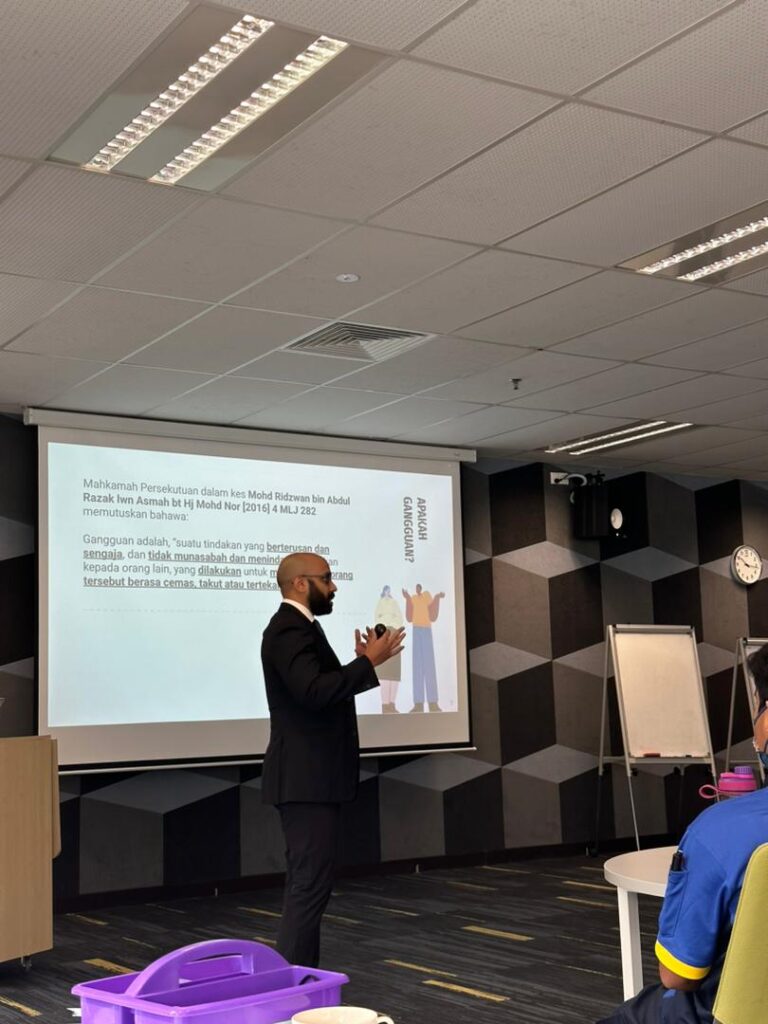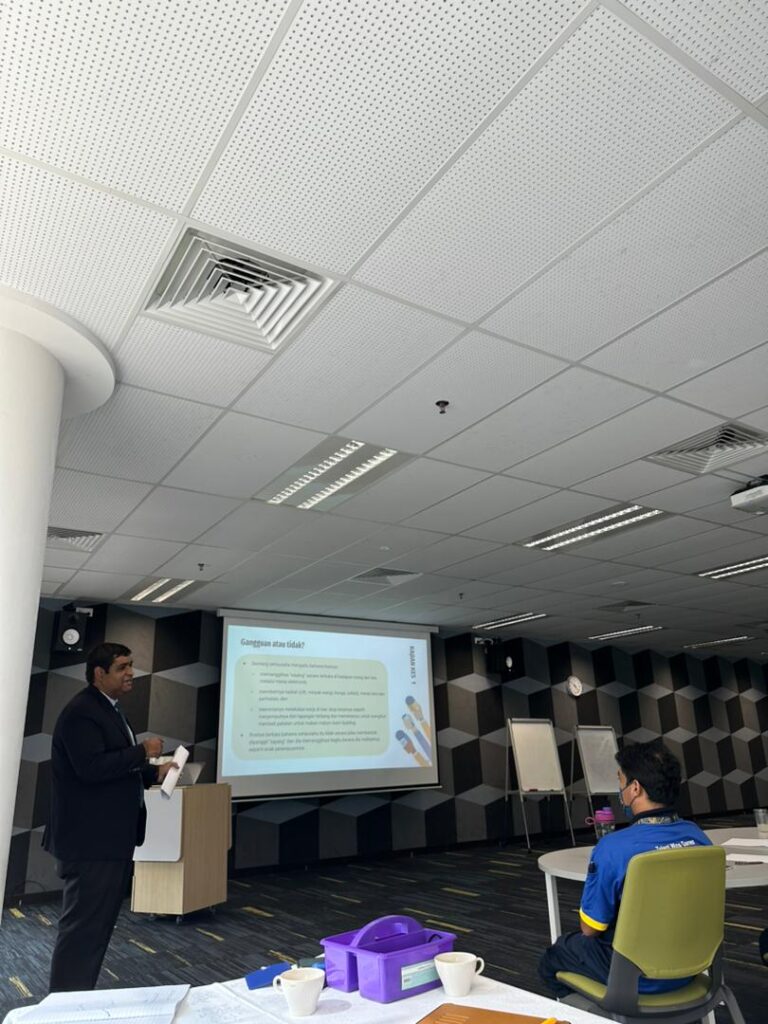Insurable interest is one of the most fundamental concepts in insurance law and is not without its share of criticism and discombobulation. For the uninitiated, in the realm of life insurance, insurable interest in simple terms (if there is such a thing) is the interest one person has in another person’s life in that it would prejudice that first person financially or emotionally if that other person were to come to harm or death. Cue the discombobulation.
On the surface, the concept of insurable interest can appear to be straightforward although there are pundits who would disagree. Malaysian legislation does not definitively define the term “insurable interest”, but the Financial Services Act 2013 (and the Insurance Act 1996 and the Insurance Act 1963 before that) does enumerate the categories of persons in whose lives one is deemed to have insurable interest. The focus of discussion in this article, however, relates to the timing requirement of insurable interest.
Before delving into the Malaysian position, the origins of the concept, i.e., the English law on insurance, ought to be considered briefly to shed some light on the importance of insurable interest. In the nascent years of English insurance, anyone could effect insurance on anything or anyone. With no parameters or safeguards of any sort, it is not difficult to see how this form of insurance can be abused. One could effect insurance on the life of a debilitated stranger and claim monetary benefit upon the demise of said stranger and, in the early days of insurance, this sort of practice mutated insurance contracts into gambling or wagering contracts. One bets with an insurer on the chances of an event occurring (e.g., death of a stranger) and then later claims the amount wagered upon occurrence of said event; in some cases, said event would even be deliberately brought about for financial gain.
English legislators, in an endeavour to curb such depravity, introduced the concept of insurable interest in the Life Assurance Act 1774 (“LAA 1774”). The LAA 1774 provided that the person benefitting from an insurance must have insurable interest in the life or event insured and, if insurable interest is absent, the insurance is void. Additionally, the insured can recover no more under an insurance policy than the value of the insurable interest.
This meant that A, for example, who intends to effect insurance on the life of B, must have insurable interest in B’s life, otherwise the insurance would be void; also, the amount of moneys payable to A under the insurance must be no more than the value of A’s interest in B’s life.
However, the LAA 1774 stopped short of prescribing how long the insurable interest had to last or whether the insurable interest had to subsist after insurance had been effected. There was room for interpretation and some English Courts took the position that all that was required was for insurable interest to exist at the point the insurance was effected so that A could still go on to receive the insurance proceeds upon B’s demise despite A no longer having any insurable interest in B’s life at any time after the inception of the insurance.
Two prominent cases in which the English Courts tussled with whether this ought to be the case are Godsall v Boldero (1807) 9 East 72 and Dalby v India and London Line Assurance [1843-60] All ER Rep 1040.
In the case of Godsall v Boldero, a creditor effected insurance on the life of his debtor for the amount of the debt. After the debtor died, his executors settled the entire debt. Nevertheless, the creditor made a claim for moneys under the insurance. The insurer denied the creditor’s claim, reasoning that there was no more debt (i.e. no prejudice against the creditor and in essence, no insurable interest). The Court found in favour of the insurer and ruled that the insurance was substantially a contract of indemnity insuring against the loss of the debt. The Courts in Godsall v Boldero concluded that insurable interest should exist at time of the insured event and that the insurance was a contract of indemnity.
This decision was overruled by the Court in Dalby v India and London Line Assurance. In the case of Dalby, an insurance policy was effected on the life of the Duke of Cambridge with insurance company Anchor Life Assurance Co which subsequently applied for reinsurance with the defendant reinsurers for said insurance policy. Sometime before the Duke died, the insurance policy effected on his life was cancelled. Anchor Life, however, continued to pay premium for the reinsurance and went on to make a claim for the reinsured sum from the defendant when the Duke eventually died. The defendant rejected the claim on the basis of the absence of insurable interest at the time of death; sure enough, Anchor Life itself did not pay anything upon the death of the Duke as there was no insurance. Despite this, the Court found in favour of Anchor Life, stating that:
- the requirements of the LAA 1774 insofar as insurable interest was concerned would be satisfied if the person effecting the insurance policy had an insurable interest in the life assured at the time of entering into the policy; it was not necessary that such insurable interest continue until the death of the life assured; and
- life insurance was not indemnity insurance, but simply a contract for the insurer to pay the sum insured upon occurrence of the insured event in consideration of premium which had been continuously paid by the insured.
This decision is not without its critics and one could offer several reasons for this. After cancellation of the policy on the Duke’s life, Anchor Life stopped receiving premium and was no longer bearing the risk of insuring the Duke. How the Court could think it correct that Anchor Life should be paid the reinsurance moneys when the very basis of the reinsurance had ceased (or, in other words, Anchor Life no longer had any insurable interest) simply because Anchor Life had continued to pay premium is anyone’s guess. Some critics even take the view that this decision in fact legitimizes the wagering and gambling the law had sought to curb.
Nevertheless, this progress of insurable interest in English law has been reflected in Malaysian legislation as well; first in the Insurance Act 1963, then in the Insurance Act 1996 and, finally and currently, in the Financial Services Act 2013.
Section 40 of the Insurance Act 1963 most closely mirrored the position in the LAA 1774 and the position taken in Dalby. Section 40 provided that a life policy shall be void unless the person effecting the policy has an insurable interest in the life of the insured at the time the insurance is effected, and the moneys to be paid under the policy shall not exceed the amount of insurable interest at the time the insurance is effected.
This section was later amended and rephrased in the Insurance Act 1996 and renumbered as section 152. The effect of the amendment was that, not only was there a requirement that insurable interest must exist at the time the insurance was effected, but the policy moneys payable upon the insured event, or where the policy moneys were payable in instalments, the discounted value of all future instalments under the life policy, could not exceed the amount of insurable interest at the time of such insured event. For illustration’s sake, using the A & B scenario used earlier, if after A effects a policy on B’s life, A loses its insurable interest in B’s life or has a diminished insurable interest in B’s life, A would not receive anything or receive an amount not more than that diminished interest in B’s life respectively when B dies.
The section 152 provision on insurable interest, with reference to policy moneys payable in instalments specifically, made sense especially for the creditor-debtor category of insurances. A creditor has insurable interest in the life of its debtor; the debtor owes the creditor money and therefore the debtor’s being alive and able to pay the debt is in the interest of the creditor. A creditor can then effect a life insurance policy on the life of the debtor and the amount can be ascertained as well – the insured sum would be the sum the debtor owes the creditor.
Say, for example, the debtor owed the creditor RM12,000 and an arrangement is made whereby the debtor pays RM1,000 each month to the creditor. The creditor effects insurance on the debtor’s life with the total sum insured of RM12,000 and, in sync with the creditor and debtor’s payment arrangement, the sum insured of RM12,000 decreases by RM1,000 every month in correspondence with the decreasing value of the debtor’s debt. However, during the 7th month, the debtor manages to pay off the entire debt and then dies in the 8th month. The fact is, with the debt fully settled, there is no more money due to the creditor and therefore no more insurable interest, but based on the agreement between creditor and insurer, RM5,000 is the sum insured in the 8th month.
Under section 40 of the Insurance Act 1963, the creditor would be entitled to be paid the sum of RM5,000 because it does not matter that there was no insurable interest at the point of death of the debtor; the insurance policy was valid because there was insurable interest at the inception of the policy and therefore the insurer would simply pay the sum insured. Therein lies the disconnect – the creditor, although effecting the insurance to safeguard his interest in the debt of RM12,000 in the first place, stands to receive a windfall of RM5,000 having already been paid the entire debt in the 7th month.
However, under section 152 of the Insurance Act 1996, the moneys payable under the policy must not exceed the amount of insurable interest at the time the insured event occurs; the insurable interest at the point of death of the debtor in the 8th month being 0, the moneys payable not exceeding the amount of insurable interest at that point would also be 0.
Against the backgrounds of moral hazard considerations and general public policy frowning on wagering, one would have thought of section 152 as being a statutory override to the principles laid down in Dalby and that insurers would have legislative support for not paying out at all or in full to a creditor policy owner whenever the value of the insurable interest was extinguished or lessened as at the point of death of a debtor life assured. Oddly enough, particularly in regard to Mortgage Reducing or Decreasing Term Assurance, Malaysian insurers have been known to want to pay in full, i.e., the sum assured as at the point of death, despite the debt having been settled in full or reduced due to pre-payment of instalments. Perhaps because of the one-time payment of premium for the entire term of cover right at the commencement of cover, Malaysian insurers have adopted the stance that, the risk having been paid for in full in advance, they should honour what they agreed to pay when the agreement was first entered into.
There have, of course, been issues as to who the proceeds ought to be paid to; the creditor policy owner, not being owed any more debt by the deceased debtor life assured, and not wanting to be accused of unjust enrichment, declines acceptance of the moneys by proclaiming it no longer has any interest in the insurance; due to the privity of contract rule, payment to the estate of the deceased is also not possible as the insurer would not receive a valid discharge in law thereby. However. these issues can provide fodder for a separate article altogether; in any event, they purport to have been dealt with by the Financial Services Act 2013.
Cue the Financial Services Act 2013 and a reversion to the Insurance Act 1963: paragraph 3(1) of Schedule 8 to this Act repeats the requirement for insurable interest at the time the insurance is effected but makes no mention whatsoever as to whether insurable interest needs to subsist at the time of the event giving rise to a claim. The natural inference from the omission is that Dalby should apply so that it does not matter whether there is still insurable interest at the point of occurrence of the insured event. Whether this has been done to accord with what insurers were already practising despite section 152 of the 1996 Act is not something the legislators will readily admit to.
Spousal insurable interest is also affected by when insurable interest is required. Similar to the English position, in Malaysia, one is deemed to have insurable interest in the life of his or her spouse. But suppose one effects insurance on the life of his or her spouse and later divorces said spouse. Insurable interest no longer exists and suppose also that the marriage breaks down to a point that the person who effected the policy is convinced that it is only logical to do away with the former spouse. And suppose also that murder is arranged and cannot be traced back to the policy owner because, under public policy, one is not able to benefit from one’s own wrongdoing, especially that of the illegal and bloody kind. Under the current law, in this scenario, it would appear that the person who effected the policy would stand to receive the moneys payable under the insurance.
This is not to say that the law as it is currently is an incentive for former spouses with violent, vengeful intentions to carry out the deed, or that insurable interest alone is an effective deterrent against murder. Rather, the point of this discussion is really whether any policy owner should benefit from the death of an individual they no longer have any insurable interest in.
The overriding concern in the two scenarios mentioned, creditor-debtor and spouses, is moral hazard – where insurable interest has ceased, should a creditor be allowed to make a profit and should an individual be allowed to benefit monetarily from the death of a former spouse?
On the one hand, there is the argument that life insurance is not indemnity insurance and that the value of a human life or the benefit derived from human relationships cannot be quantified or limited, but what if creditor-debtor insurances, despite being effected on the life of a debtor, worked on an indemnity basis? After all, the purpose of the insurance on the debtor’s life is to ensure that the creditor is not left with an unpaid debt in case the debtor dies before settling the debt. Further, in this scenario, the amount of insurable interest is quantifiable and capable of being proven to a tee.
To take it a step further, one could also argue radically that life insurance should, perhaps, be contracts of indemnity. It is conceded that there cannot be a limit on the value of the insurable interest one places on their spouse, but when the insurable interest ceases to exist, when the policy owner is deemed to not suffer prejudice, emotional, monetary or otherwise, upon the death of that former spouse, it could be argued that the policy owner should not stand to benefit from said death.
Any concerns of premiums paid continuously since the inception of the policy with an expectation to receive the sum insured upon occurrence of insured event can be addressed by making it compulsory for policy owners to notify insurers of a divorce or other change in insurable interest. Alternatively, insurers could automatically be notified by the relevant authorities upon finalisation of the divorce, then premiums would no longer be collected and the policy should terminate immediately due to lack of insurable interest.
Certain insurers are not perturbed by this lack of requirement of insurable interest at the time of payout; having calculated and accepted the risk of insuring the life assured, insurers are generally ready to make that payout and their priority would be to do so correctly in accordance with the law. On the flipside, there are creditors, mostly institutional and for accounting reasons perhaps, that do not accept the surplus moneys payable under policies where debts have been settled, even when the insurer insists on paying. Therefore, it would be worthwhile for a change to legislation insofar as when insurable interest is required is concerned if it will mean a leaner, more efficient system of insurance. If nothing else, an ex-spouse bent on a quick kill for profit may rethink his or her strategy if there is nothing to be got from murder most foul.
Authors: Christopher Foo and Jessie Lim













